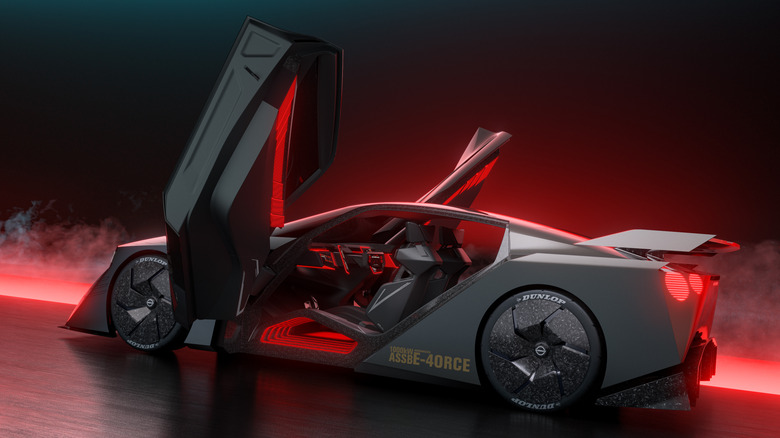Nissan R36: Is There Going To Be A New GT-R?
The R35 Nissan GT-R is an iconic performance car that has been on the scene since it first debuted in 2007. It arrived in the U.S. for the 2009 model year. Nicknamed "Godzilla," the R35 GT-R has become renowned for outperforming supercars that cost far more. The highly regarded but aging R35 GT-R is soon to come to the end of its production run and its fans are wondering about what may come next as far as the timing and propulsion system of its successor, the R36.
Let's first trace the evolution of the R35 Nissan GT-R from its initial 2009 version to its current iteration. In terms of horsepower, the original 2009 GT-R came with 480 horsepower, which has been upped to 565 horses in the 2024 standard GT-R and 600 in the Track-spec versions. Torque has gone from 434 lb-ft in 2009 to 2024's 467 or 481 lb-ft, depending on your choice of engine tune. Straight-line performance expressed as a 0-60 time has gone from 3.5 seconds in 2009 to 2.7 seconds in 2024. Price has escalated from $70,475 in 2009 to between $122,985 for the Premium Trim and $222,985 for the NISMO.
What we know about the upcoming R36 GT-R
The Nissan executives responsible for the next GT-R have made some interesting comments about what we might expect in a next-generation car and when we might see it. A key question swirling around this is whether the R36 GT-R will be internal combustion, electric, or possibly a combination of both.
As to the battery electric option, Nissan representatives have made the case to the motoring press that a pure electric GT-R must be fully usable as a track car without any of the current technological limitations that EVs have when used for this purpose. That means heavy battery packs and long recharging times are unacceptable. This points toward Nissan's stated goal of having production-ready solid-state batteries, which are much lighter, have higher power density, and are faster-charging, by 2028. So it is possible that an EV GT-R could arrive by 2030, assuming that Nissan's battery development keeps up with its projections.
Nissan has shown a 1,400 horsepower EV concept that looks like it could be a future GT-R, although they have not named it as such. Rather, Nissan has called it the Hyper Force concept. It has many design cues which are strongly reminiscent of the current GT-R.
Will there be an R35 1/2 GT-R?
So if the full EV GT-R won't be here until 2030 or so, how will Nissan fill the GT-R gap between 2025 when the R35 phases out and 2030 when the EV version arrives? Nissan operatives have conceded that the R35's VR38DETT 3.8-Liter twin-turbocharged V6 will have no problems meeting upcoming emissions standards in the intervening years. This leaves the possibility of either a higher-output gasoline-powered internal combustion engine (ICE) version of the R35 or a performance-oriented hybrid version, if there is to be a "stopgap" model.
While a higher-performing ICE version of the GT-R would be easily doable, Nissan might want to promote its "e-power" drive systems in its flagship vehicle. Performance-focused hybrid supercars are now an established category, including such esteemed vehicles as the McLaren Artura and P1, Porsche 918, Ferrari 296 and SF90 Stradale, Koenigsegg Regera, Lamborghini Sian and Revuelto, Aston Martin Valkyrie, Mercedes-AMG One, and the Corvette E-Ray. Given the GT-R's traditional front-engine, all-wheel drive layout, one possible solution might be a rear-mounted e-axle, if Nissan engineers can build it into a modified version of the R35's platform.
That's where the R36 controversy stands as we enter the final countdown for R35 GT-R production. Will there be a hybrid GT-R to fill the gap between the demise of the R35 and the debut of the all-electric GT-R in 2030? Or will the Nissan GT-R faithful just have to wait for the EV future to arrive? Only Nissan knows what comes next.


